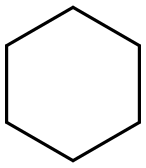Cyclohexane
- CAS No.
- 110-82-7
- Chemical Name:
- Cyclohexane
- Synonyms
- cyclohexan;NAPHTHENE;HEXAMETHYLENE;Cykloheksan;hexamethylen;CYCLOHEXANE-205;HEXAHYDROBENZENE;ohexane;Cicloesano;Cyclohesan
- CBNumber:
- CB4193601
- Molecular Formula:
- C6H12
Lewis structure
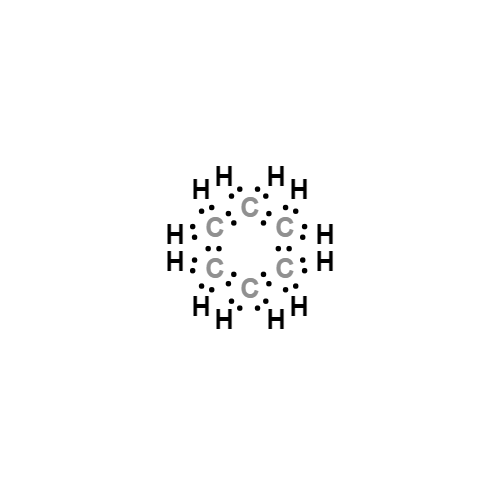
- Molecular Weight:
- 84.16
- MDL Number:
- MFCD00003814
- MOL File:
- 110-82-7.mol
- MSDS File:
- SDS
| Melting point | 4-7 °C (lit.) |
|---|---|
| Boiling point | 80.7 °C (lit.) |
| Density | 0.779 g/mL at 25 °C (lit.) |
| vapor density | 2.9 (vs air) |
| vapor pressure | 168.8 mm Hg ( 37.7 °C) |
| refractive index |
n |
| Flash point | -1 °F |
| storage temp. | Store at +5°C to +30°C. |
| solubility | ethanol: miscible(lit.) |
| form | Liquid |
| color | colorless |
| Relative polarity | 0.006 |
| Odor | resembling benzene; mild, sweet, resembling chloroform. |
| Odor Threshold | 2.5ppm |
| explosive limit | 1.2-8.3%(V) |
| Water Solubility | PRACTICALLY INSOLUBLE |
| FreezingPoint | 6.554℃ |
| λmax |
λ: 210 nm Amax: ≤1.00 λ: 220 nm Amax: ≤0.50 λ: 230 nm Amax: ≤0.20 λ: 235 nm Amax: ≤0.10 λ: 240 nm Amax: ≤0.08 λ: 250 nm Amax: ≤0.03 λ: 255 nm Amax: ≤0.01 |
| Merck | 14,2723 |
| BRN | 1900225 |
| Henry's Law Constant | 1.03, 1.26, 1.40, 1.77, and 2.23 at 10, 15, 20, 25, and 30 °C, respectively (EPICS, Ashworth et al., 1988) 0.54, 0.69, 0.82, 1.43, and 1.79 at 2.0, 6.0, 10.0, 18.0, and 25.0 °C, respectively (Dewulf et al.,1999) |
| Exposure limits | TLV-TWA 300 ppm (~1050 mg/m3) (ACGIH, OSHA, and NIOSH); IDLH 10,000 ppm (NIOSH). |
| Dielectric constant | 2.0(20℃) |
| Stability | Volatile |
| InChIKey | XDTMQSROBMDMFD-UHFFFAOYSA-N |
| LogP | 3.44 at 20℃ |
| Substances Added to Food (formerly EAFUS) | CYCLOHEXANE |
| FDA 21 CFR | 175.105; 176.200; 73.1 |
| CAS DataBase Reference | 110-82-7(CAS DataBase Reference) |
| EWG's Food Scores | 2 |
| FDA UNII | 48K5MKG32S |
| NIST Chemistry Reference | Cyclohexane(110-82-7) |
| EPA Substance Registry System | Cyclohexane (110-82-7) |
SAFETY
Risk and Safety Statements
| Symbol(GHS) |     GHS02,GHS07,GHS08,GHS09 |
|||||||||
|---|---|---|---|---|---|---|---|---|---|---|
| Signal word | Danger | |||||||||
| Hazard statements | H225-H304-H315-H336-H410 | |||||||||
| Precautionary statements | P210-P233-P273-P301+P310-P303+P361+P353-P331 | |||||||||
| Hazard Codes | F,Xn,N | |||||||||
| Risk Statements | 11-38-50/53-65-67-20 | |||||||||
| Safety Statements | 9-16-25-33-60-61-62 | |||||||||
| RIDADR | UN 1145 3/PG 2 | |||||||||
| WGK Germany | 2 | |||||||||
| RTECS | GU6300000 | |||||||||
| F | 3-10 | |||||||||
| Autoignition Temperature | 500 °F | |||||||||
| TSCA | Yes | |||||||||
| HS Code | 2902 11 00 | |||||||||
| HazardClass | 3 | |||||||||
| PackingGroup | II | |||||||||
| Toxicity | LC in mice: ~60-70 mg/l air (Lazarew) | |||||||||
| IDLA | 1,300 ppm [10% LEL] | |||||||||
| NFPA 704 |
|
Cyclohexane price More Price(92)
| Manufacturer | Product number | Product description | CAS number | Packaging | Price | Updated | Buy |
|---|---|---|---|---|---|---|---|
| Sigma-Aldrich | CX2290 | Cyclohexane Meets ACS Specifications, Meets Reagent Specifications for testing USP/NF monographs GR ACS | 110-82-7 | 1L | $227 | 2024-03-01 | Buy |
| Sigma-Aldrich | CX2290 | Cyclohexane Meets ACS Specifications, Meets Reagent Specifications for testing USP/NF monographs GR ACS | 110-82-7 | 4L | $392 | 2024-03-01 | Buy |
| Sigma-Aldrich | CX2290 | Cyclohexane Meets ACS Specifications, Meets Reagent Specifications for testing USP/NF monographs GR ACS | 110-82-7 | 200L | $5490 | 2024-03-01 | Buy |
| Sigma-Aldrich | CX2286 | Cyclohexane OmniSolv? | 110-82-7 | 4L | $403 | 2024-03-01 | Buy |
| Sigma-Aldrich | 33117 | Cyclohexane puriss. p.a., ACS reagent, ≥99.5% (GC) | 110-82-7 | 6X1L | $268.8 | 2024-03-01 | Buy |
Cyclohexane Chemical Properties,Uses,Production
Description
Cyclohexane is obtained by the distillation of petroleum or by hydrogenation of benzene. It constitutes 0.5–1.0% of petroleum
Chemical Properties
Cyclohexane is a colorless liquid with a mild, sweet odor.
Physical properties
Colorless liquid with a sweet, chloroform-like odor. A detection odor threshold concentration of 2,700 mg/m3 (784 ppmv) was experimentally determined by Dravnieks (1974). An odor threshold concentration of 2.7 ppbv was reported by Nagata and Takeuchi (1990).
Uses
Suitable for HPLC, spectrophotometry, environmental testing
Uses
Cyclohexane is a petroleum product obtainedby distilling C4- 400°F boiling rangenaphthas, followed by fractionation andsuperfractionation; also formed by catalytichydrogenation of benzene. It is usedextensively as a solvent for lacquers andresins, as a paint and varnish remover, andin the manufacture of adipic acid, benzene,cyclohexanol, and cyclohexanone.
Uses
Solvent for lacquers and resins. Paint and varnish remover. In the extraction of essential oils. In analytical chemistry for mol wt determinations (cryoscopic constant 20.3). In the manufacture of adipic acid, benzene, cyclohexyl chloride, nitrocyclohexane, cyclohexanol and cyclohexanone. In the manufacture of solid fuel for camp stoves. In fungicidal formulations (possesses slight fungicidal action). In the industrial recrystallization of steroids.
Definition
cyclohexane: A colourless liquidcycloalkane, C6H12; r.d. 0.78; m.p.6.5°C; b.p. 81°C. It occurs in petroleumand is made by passing benzeneand hydrogen under pressureover a heated Raney nickel catalyst at150°C, or by the reduction of cyclohexanone.It is used as a solvent andpaint remover and can be oxidizedusing hot concentrated nitric acid tohexanedioic acid (adipic acid). The cyclohexanering is not planar and canadopt boat and chair conformations;in formulae it is representedby a single hexagon.
Definition
A colorless liquid alkane that is commonly used as a solvent and in the production of hexanedioic acid (adipic acid) for the manufacture of nylon. Cyclohexane, itself, is manufactured by the reformation of longer chain hydrocarbons present in crude-oil fractions. It is also interesting from a structural point of view, existing as a ‘puckered’ six-membered ring, having all bonds between carbon atoms at 109.9° (the tetrahedral angle). The molecule undergoes rapid interconversion between two ‘chair-like’ CONFORMATIONS, which are energetically equivalent, passing through a ‘boat-like’ structure of higher energy. It is commonly represented by a hexagon.
Production Methods
Cyclohexane is fractionated from crude oil and may be released wherever petroleum products are refined, stored, and used. Another large source of general release is in exhaust gases from motor vehicles. It is prepared synthetically from benzene, by hydrocracking of cyclopentane, or from toluene by simultaneous dealkylation and double bond hydrogenation.
Definition
ChEBI: An alicyclic hydrocarbon comprising a ring of six carbon atoms; the cyclic form of hexane, used as a raw material in the manufacture of nylon.
General Description
A clear colorless liquid with a petroleum-like odor. Used to make nylon, as a solvent, paint remover, and to make other chemicals. Flash point -4°F. Density 6.5 lb / gal (less than water) and insoluble in water. Vapors heavier than air.
Air & Water Reactions
Highly flammable. Insoluble in water.
Reactivity Profile
Liquid nitrogen dioxide was fed into a nitration column containing hot Cyclohexane, due to an error. An explosion resulted [MCA Case History 128(1962)] Incompatible with strong oxidizers.
Health Hazard
Dizziness, with nausea and vomiting. Concentrated vapor may cause unconsciousness and collapse.
Health Hazard
Cyclohexane is an acute toxicant of loworder. It is an irritant to the eyes and respiratorysystem. Exposure to a 1–2% concentrationin air caused lethargy, drowsiness,and narcosis in test animals. The lethal concentrationfor a 1-hour exposure in mice isestimated at around 30,000 ppm. Ingestionof cyclohexane exhibited low toxic effects intest species. The LD50 values in the literature show a wide variation. It may be detectedfrom its odor at 300 ppm concentration.
Flammability and Explosibility
Highly flammable
Chemical Reactivity
Reactivity with Water: No reaction; Reactivity with Common Materials: No reaction; Stability During Transport: Stable; Neutralizing Agents for Acids and Caustics: Not pertinent; Polymerization: Not pertinent; Inhibitor of Polymerization: Not pertinent.
Safety Profile
Poison by intravenous route, Moderately toxic by ingestion. A systemic irritant by inhalation and ingestion. A skin irritant. Mutation data reported. Flammable liquid. Dangerous fire hazard when exposed to heat or flame; can react with oxidming materials. Moderate explosion hazard in the form of vapor when exposed to flame. When mixed hot with liquid dinitrogen tetraoxide an explosion can result. To fight fire, use foam, CO2, dry chemical, spray, fog. When heated to decomposition it emits acrid smoke and fumes.
Potential Exposure
Cyclohexane is used as a chemical intermediate; as a solvent for fats, oils, waxes, resins, cer- tain synthetic rubbers; and as an extractant of essential oils in the perfume industry.
First aid
If this chemical gets into the eyes, remove anycontact lenses at once and irrigate immediately for at least15 min, occasionally lifting upper and lower lids. Seek medical attention immediately. If this chemical contacts the skin,remove contaminated clothing and wash immediately withsoap and water. Seek medical attention immediately. If thischemical has been inhaled, remove from exposure, begin rescue breathing (using universal precautions, including resuscitation mask) if breathing has stopped and CPR if heart actionhas stopped. Transfer promptly to a medical facility. Whenthis chemical has been swallowed, get medical attention. Donot induce vomiting
Carcinogenicity
No tumor-promoting activity was observed in mice receiving one 60 mL application of 0.3% DMBA in benzene followed by a 60 mL application of cyclohexane twice weekly for 50 weeks.
Source
Schauer et al. (1999) reported cyclohexane in a diesel-powered medium-duty truck
exhaust at an emission rate of 210 μg/km.
California Phase II reformulated gasoline contained cyclohexane at a concentration of 8,900
mg/kg. Gas-phase tailpipe emission rates from gasoline-powered automobiles with and without
catalytic converters were 1.44 and 238.0 mg/km, respectively (Schauer et al., 2002).
Environmental Fate
Biological. Microbial degradation products reported include cyclohexanol (Dugan, 1972;
Verschueren, 1983), 1-oxa-2-oxocycloheptane, 6-hydroxyheptanoate, 6-oxohexanoate, adipic acid,
acetyl-CoA, succinyl-CoA (quoted, Verschueren, 1983), and cyclohexanone (Dugan, 1972; Keck
et al., 1989).
Photolytic. The following rate constants were reported for the reaction of cyclohexane and OH
radicals in the atmosphere: 5.38 x 10-12 cm3/molecule?sec at 295 K (Greiner, 1970); 6.7 x 10-12
cm3/molecule?sec at 300 K (Darnall et al., 1978); 6.69 x 10-12 cm3/molecule?sec at 298 (DeMore
and Bayes, 1999); 7.0 x 10-12 cm3/molecule?sec (Atkinson et al., 1979); 7.49 x 10-12
cm3/molecule?sec (Atkinson, 1990). A photooxidation reaction rate constant of 1.35 x 10-16
cm3/molecule?sec was reported for the reaction of cyclohexane with NO3 in the atmosphere
(Atkinson, 1991).
Chemical/Physical. The gas-phase reaction of cyclohexane with OH radicals in the presence of
nitric oxide yielded cyclohexanone and cyclohexyl nitrate as the major products (Aschmann et al.,
1997).
Cyclohexane will not hydrolyze because it has no hydrolyzable functional group.
storage
Color Code—Red: Flammability Hazard: Store ina flammable liquid storage area or approved cabinet awayfrom ignition sources and corrosive and reactive materials.Prior to working with cyclohexane you should be trained onits proper handling and storage. Before entering confinedspace where cyclohexane may be present, check to makesure that an explosive concentration does not exist.Cyclohexane must be stored to avoid contact with oxidizers(such as perchlorates, peroxides, permanganates, chlorates,and nitrates), since violent reactions occur. Store in tightlyclosed containers in a cool well-ventilated area away fromheat. Metal containers involving the transfer of this chemical should be grounded and bonded. Where possible, automatically pump liquid from drums or other storagecontainers to process containers. Drums must be equippedwith self-closing valves, pressure vacuum bungs, and flamearresters. Use only nonsparking tools and equipment, especially when opening and closing containers of this chemical. Sources of ignition, such as smoking and open flames,are prohibited where this chemical is used, handled, orstored in a manner that could create a potential fire orexplosion hazard. Wherever cyclohexane is used, handled,manufactured, or stored, use explosion-proof electricalequipment and fittings.
Shipping
UN1145 Cyclohexane, Hazard Class: 3; Labels: 3-Flammable liquid.
Purification Methods
It is best to purify it by washing with conc H2SO4 until the washings are colourless, followed by water, aqueous Na2CO3 or 5% NaOH, and again water until neutral. It is then dried with P2O5, Linde type 4A molecular sieves, CaCl2, or MgSO4 then Na and distilled. Cyclohexane has been refluxed with, and distilled from Na, CaH2, LiAlH4 (which also removes peroxides), sodium/potassium alloy, or P2O5. Traces of *benzene can be removed by passage through a column of silica gel that has been freshly heated: this gives material suitable for ultraviolet and infrared spectroscopy. If there is much *benzene in the cyclohexane, most of it can be removed by a preliminary treatment with nitrating acid (a cold mixture of 30mL conc HNO3 and 70mL of conc H2SO4) which converts *benzene into nitrobenzene. The impure cyclohexane and the nitrating acid are placed in an ice bath and stirred vigorously for 15minutes, after which the mixture is allowed to warm to 25o during 1hour. The cyclohexane is decanted, washed several times with 25% NaOH, then water, dried with CaCl2, and distilled from sodium. Carbonyl-containing impurities can be removed as described for chloroform. Other purification procedures include passage through columns of activated alumina and repeated crystallisation by partial freezing. Small quantities may be purified by chromatography on a Dowex 710-Chromosorb W gas-liquid chromatographic column. Flammable liquid. [Sabatier Ind Eng Chem 18 1005 1926, Schefland & Jacobs The Handbook of Organic Solvents (Van Nostrand) p592 1953, Beilstein 5 IV 27.] Rapid purification: Distil, discarding the forerun. Stand distillate over Grade I alumina (5% w/v) or 4A molecular sieves.
Toxicity evaluation
If released to air, cyclohexane will exist solely as a vapor in the
ambient atmosphere, and will be degraded in the atmosphere
by reaction with photochemically produced hydroxyl radicals,
though direct photolysis is not expected due to the lack of
absorption in the environmental spectrum. Volatilization from
water surfaces is expected to be an important fate for this
compound, and half-lives in a model river and lake are expected
to be 3 h and ~3.5 days respectively. Adsorption to
suspended solids and sediments is also expected, though
hydrolysis in the environment is unlikely due to the lack of
hydrolyzable functional groups.
The potential for bioconcentration and bioaccumulation of
cyclohexane in aquatic organisms is moderate. It is highly
resistant to biodegradation and is catabolized chiefly by
cooxidation.
Incompatibilities
May form explosive mixture with air. Contact with oxidizers, nitrogen dioxide, and oxygen can cause fire and explosion hazard. Can explode in heat when mixed with dinitrogen tetraoxide liquid.
Waste Disposal
Dissolve or mix the material with a combustible solvent and burn in a chemical incinera- tor equipped with an afterburner and scrubber. All federal, state, and local environmental regulations must be observed.
Cyclohexane Preparation Products And Raw materials
Raw materials
Preparation Products
1of8
| Supplier | Tel | Country | ProdList | Advantage | |
|---|---|---|---|---|---|
| Shandong Yanshuo Chemical Co., Ltd. | +86-18678179670 +86-18615116763 | sales@yanshuochem.com | China | 101 | 58 |
| Hebei Duling International Trade Co. LTD | +8618032673083 | sales05@hbduling.cn | China | 15745 | 58 |
| PT CHEM GROUP LIMITED | +86-85511178 +86-85511178 | peter68@ptchemgroup.com | China | 35453 | 58 |
| Hebei Mojin Biotechnology Co., Ltd | +8613288715578 | sales@hbmojin.com | China | 12456 | 58 |
| Hebei Jingbo New Material Technology Co., Ltd | +8619931165850 | hbjbtech@163.com | China | 1000 | 58 |
| Henan Fengda Chemical Co., Ltd | +86-371-86557731 +86-13613820652 | info@fdachem.com | China | 7786 | 58 |
| Capot Chemical Co.,Ltd. | 571-85586718 +8613336195806 | sales@capotchem.com | China | 29797 | 60 |
| Henan Tianfu Chemical Co.,Ltd. | +86-0371-55170693 +86-19937530512 | info@tianfuchem.com | China | 21691 | 55 |
| Shanghai Time Chemicals CO., Ltd. | +86-021-57951555 +8617317452075 | jack.li@time-chemicals.com | China | 1807 | 55 |
| Hefei TNJ Chemical Industry Co.,Ltd. | +86-0551-65418679 +86-18949832763 | info@tnjchem.com | China | 2989 | 55 |
Related articles
- How to Determine the Polarity of Cyclohexane?
- Cyclohexane is used extensively as a solvent for lacquers and resins, its polarity can be judged from two aspects: bond polari....
- Dec 22,2023
- Toxicity of Cyclohexane
- Cyclohexane is obtained by the distillation of petroleum or by hydrogenation of benzene. It constitutes 0.5–1.0% of petroleum.
- Jan 13,2022
- Uses and safety of Cyclohexane
- Cyclohexane is used as a solvent to dissolve cellulose ethers, lacquers, resins, fats, waxes, oils, bitumen and crude rubber. ....
- Jan 10,2022
Related Qustion
- Q:Cyclohexane Safety Data Sheets
- A:Cyclohexane is a volatile, flammable and explosive toxic chemical with an irritating odour.
- Mar 11,2024
View Lastest Price from Cyclohexane manufacturers
| Image | Update time | Product | Price | Min. Order | Purity | Supply Ability | Manufacturer | |
|---|---|---|---|---|---|---|---|---|
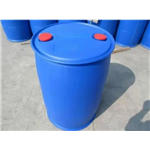 |
2024-04-24 | Cyclohexane
110-82-7
|
US $230.00 / ton | 1ton | 99% | 3000tons | Hebei Dangtong Import and export Co LTD | |
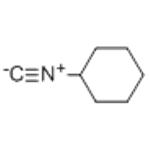 |
2023-12-26 | Cyclohexane
110-82-7
|
US $100.00-1.00 / KG | 1KG | 99% | g-kg-tons, free sample is available | Henan Fengda Chemical Co., Ltd | |
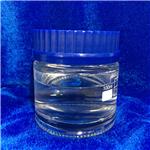 |
2023-12-26 | Cyclohexane
110-82-7
|
US $9.00 / kg | 1kg | 99% | 20000 | Hebei Jingbo New Material Technology Co., Ltd |
-

- Cyclohexane
110-82-7
- US $230.00 / ton
- 99%
- Hebei Dangtong Import and export Co LTD
-

- Cyclohexane
110-82-7
- US $100.00-1.00 / KG
- 99%
- Henan Fengda Chemical Co., Ltd
-

- Cyclohexane
110-82-7
- US $9.00 / kg
- 99%
- Hebei Jingbo New Material Technology Co., Ltd
110-82-7(Cyclohexane)Related Search:
1of4





